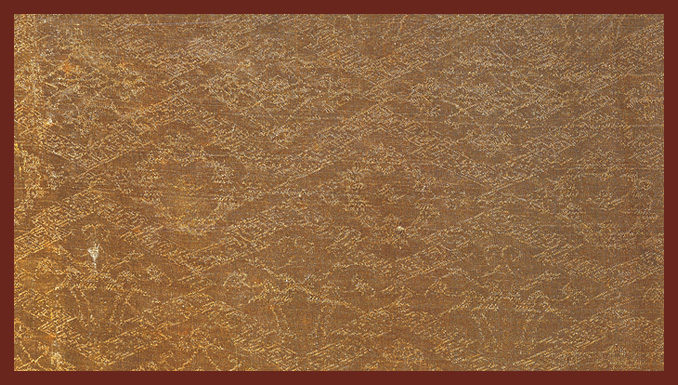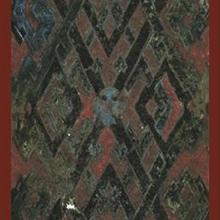Dimensions: Length: 64cm; width: 51cm
Origin:Unearthed from Han Tomb No.1 at Mawangdui, Changsha City, Hunan Province.
Yellow qi with paired birds and lozenge pattern is a kind of jacquard silk fabric woven diagonally with a raised pattern or floating long flower pattern onto a tabby ground.
Its density of warp and weft has reached 100×46 threads per square centimeter, making it a new variety of textile products of the Han Dynasty.
The design is made up of consecutive lozenge designs formed by thin thread, with patterns of flowers and plants and birds filled in them. Each group of design consists of three layers: one layer of paired-bird pattern and two layers of flower patterns.
The whole length of fabric contains altogether six such groups of designs. Each lozenge design is 6.2cm long and 4.8cm wide, and each flower pattern is 6.2cm long and 5.18cm wide, with the number of warps for one single flower totaling 518.
The weaving technique is very complicated. Experts who studied it purport that there should be looms with jacquard devices at that time to meet such technical demand. The geometric patterns, plant patterns and animal patterns are alternatively distributed within the design. Paired birds fly amid floating clouds, auspicious grass and flowers grow into each other, and lozenge flanged cup patterns join together tightly. Regularly placed lines make the whole design lively and vigorous. Among the three lengths of damask unearthed from Tomb 1, one of them is this Damask with Double-bird and Lozenge Patterns. The unearthed perfume sachet, pillow case, pitch pipe case and the outer shroud covering Xin Zhui’s body are all sewn with damask.





